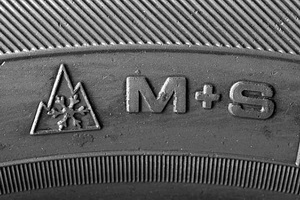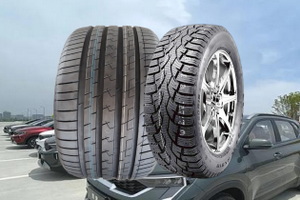News
Are Winter Tires Really Necessary for Joyroad Customers in Mild Climates?

Winter driving sounds like a snow-globe fantasy until your tires start doing the cha-cha on wet pavement. If you live where snowflakes rarely visit, you might wonder – do I really need winter tires? With Joyroad’s all-season options claiming to handle “everything,” let’s unpack what’s truly necessary for mild climates.
In short: If you live somewhere where winter is more about sweater weather than snow shovels, Joyroad all-season tires may be all you need. They offer enough grip for cooler, wetter conditions without the extra cost and hassle of swapping in winter tires. Still, occasional frost, hilly terrain, or those surprise early morning ice patches your neighbor loves to post about might justify a switch. After all, peace of mind is hard to put a price on – unless you’re a tire dealer.

But let’s not close the browser tab just yet. There’s nuance here. Not all “mild” climates are created equal. One city’s chilly drizzle is another’s icy backroad. Keep reading – I promise tire talk can be surprisingly fun.
1. What makes winter tires different from all-season tires?
Rubber Chemistry for Cold Combat
The biggest difference lies in the rubber. Winter tires use a softer compound that stays flexible even in freezing temperatures. All-season tires stiffen when cold, reducing their grip on icy or frosty roads. That flexibility means winter tires can adapt to tricky road surfaces, even when your toes are frozen. Think of it as the difference between doing yoga in pajamas versus a wetsuit.
Tread That Bites
Winter tires also have deeper grooves and aggressive tread patterns. These help channel slush and snow away from the tire, offering more traction. Sipes – those tiny slits across the tread blocks – act like claws, improving grip on black ice. All-season tires may have sipes, but not nearly as many or as deep. It’s the difference between Edward Scissorhands and a guy with nail clippers.

Stopping Distance Reality Check
In tests, winter tires stop faster on snow and ice than all-seasons. Even in cold dry weather, that rubber flexibility translates to better braking. The difference could be a few meters – or a minor accident. Winter tires turn “almost” into “absolutely.”
Not Just for Snowy Wastelands
Even if you don’t live in the Arctic, winter tires improve safety if temps drop below 7°C. If winter visits your town wearing a puffer jacket – even once – it’s time to rethink your tire lineup. Better safe than sideways.
2. How do winter tires improve braking performance?
It’s All in the Grip
Winter tires grip cold surfaces like a toddler clinging to a cookie. Their rubber compound is engineered to stay soft and flexible even when the temperature dips lower than your Wi-Fi signal during a storm. This flexibility creates more surface contact and traction, helping you brake faster and safer.
Sipes Save the Day
You know those thin slits all over the tire? Those are sipes, and they’re not just decorative. They expand slightly under pressure, creating biting edges that dig into ice, snow, and frozen roads. Think of them like cat claws – adorable but effective in a street brawl.

Shorter Stops, Fewer Accidents
When you slam the brakes in winter, all-season tires say, “We’ll try our best.” Winter tires say, “Hold my hot cocoa.” They can shorten braking distances by several car lengths, especially on slick or snowy roads. That’s the difference between a close call and a call to your insurance agent.
Even When It’s Just Cold
Winter tires aren’t only for snow. If it’s consistently below 7°C, braking performance improves even on dry pavement. That rubber’s flexibility works wonders when your fingers are frozen to the steering wheel. Safety isn’t seasonal – and neither is stopping power.
3. Can all-season tires handle snow and ice safely?
They Can…ish
All-season tires are like those friends who “kinda” know how to ice skate. They won’t embarrass you immediately, but you wouldn’t bet your tailbone on them either. Yes, they’re built to function in a variety of conditions, but snow and ice are not their love language.
Rubber Doesn’t Lie
When temps fall below 7°C, the rubber on all-season tires hardens faster than leftover lasagna. That stiffness means less grip on slippery surfaces. So, while they technically *can* operate in winter conditions, their performance is about as convincing as a teenager saying “I studied.”

Tread Pattern Matters
All-seasons have moderate tread patterns, designed for balance – not heroics. They lack the deeper grooves and heavy siping of true winter tires. Imagine trying to shovel snow with a garden trowel. Technically it works. Spiritually? It hurts.
Use with Caution
If you live where snow is rare and winter barely shows up, all-seasons might get you by. But for real winter driving – snow, slush, sleet, black ice, and a general sense of dread – it’s best to upgrade. Your bumper will thank you.
4. What temperatures are winter tires designed for?
Below 7°C, It’s Go Time
Winter tires are built to shine when things get chilly. Their special rubber compounds remain soft and flexible when temperatures drop below 7°C (or 44°F for our Fahrenheit friends). At that threshold, regular tires stiffen up like a scared cat – not ideal for road grip.
Performance vs. Conditions
Even if there’s no snow on the ground, cold temperatures alone affect how your tires behave. Winter tires adapt to these changes, hugging the road when all-seasons begin to panic. It’s like wearing a wool sweater in a cold room vs. wrapping yourself in bubble wrap.

Snow Optional, Cold Required
People often assume winter tires are just for blizzards. Not so. They’re for any cold-weather driving. In fact, they perform better on dry but cold pavement than all-seasons, due to that softer compound and grippier tread. It’s not about snow – it’s about thermodynamics.
When to Switch?
Once daytime temps consistently hit 7°C or below, it’s time to change over. Waiting too long is like putting on sunscreen *after* you’re sunburned. Plan ahead. Tires are like soup – they work best when you serve them in season.
5. Are winter tires noisy or uncomfortable to drive on?
A Little Louder, but a Lot Smarter
Winter tires can be noisier than your all-seasons – not jet engine loud, but you might hear a low hum, especially on dry pavement. That’s due to the aggressive tread patterns designed to bite into snow and ice like a hungry squirrel.
Tread Trade-Off
More grip usually means more road feedback. You may notice a slightly firmer ride, depending on your vehicle. But that’s the cost of safety. It’s like wearing a heavy winter coat – a bit bulky, but you’d be cold without it. Tires, like outerwear, are about dressing for conditions.

Not All Are the Same
Modern winter tires have come a long way. Premium models now include noise-reducing tech like variable pitch patterns that break up sound waves. Translation: your commute won’t sound like a distant herd of wildebeests. And if you do hear something odd, it might just be your playlist.
Comfort is Relative
Sure, winter tires aren’t as whisper-quiet as touring tires. But compared to the peace of mind they offer? That’s a sweet trade. A little noise in exchange for better braking and control? I’ll take it – and turn the radio up one notch.
6. Is it okay to use winter tires year-round?
Technically Yes, Practically No
You *can* use winter tires year-round the same way you *can* wear ski boots to the office. But should you? Probably not. Winter tires are made for cold weather, and they’re a bit dramatic when it comes to summer conditions – they overheat, wear out quickly, and generally throw tantrums when temps rise.
Rubber Woes in Warm Weather
The soft rubber that’s so great in winter becomes a liability in the heat. It wears faster and can feel squishy, affecting handling. Your braking distance might even increase on warm pavement. It’s like trying to jog in flip-flops – doable, but not ideal, and mildly hazardous.

Fuel Efficiency Takes a Hit
That extra friction and squishiness means more rolling resistance. So yes, your car has to work harder, and your fuel economy might start sobbing softly. Save money (and your tires’ dignity) by switching back to all-seasons or summer tires when spring returns.
Compromise Isn’t Always Smart
Unless you’re driving in a remote Arctic outpost where “summer” is just a rumor, it’s best to swap your tires seasonally. Keep your winters for winter. Let them rest in the garage while your all-seasons take the summer stage like the backup dancers they were born to be.
7. How many winter tires do I need – two or four?
Two’s a Crowd, Four’s a Party
Some folks think putting winter tires only on the drive wheels is enough. That’s like wearing snow boots on just one foot. Impressive in a weird way, but not particularly safe – or stylish.
Handling Nightmares
Using just two winter tires (usually on the front for front-wheel drive cars) causes uneven grip. You might steer just fine, but your rear end could swing out like it’s auditioning for a figure skating routine. Suddenly, you’re the star of “Tokyo Drift: Driveway Edition.”

Even Grip = Safer Driving
Installing four winter tires gives you balanced traction, consistent handling, and peace of mind. Your car responds the way it should – no surprises, no spins, no philosophical conversations with your steering wheel about why it’s suddenly not listening to you.
The Myth of “Just Two”
Yes, it’s cheaper to only buy two. So is eating gas station sushi. Doesn’t mean it’s a good idea. Winter driving is about control and predictability – something you won’t get with a mismatched set.
Always go for four. Your car – and your insurance premium – will thank you later.
Conclusion
Winter tires aren’t just for snow; they’re for safety. From better grip and shorter stops to keeping your car from doing accidental pirouettes, the right winter setup makes all the difference. So when temperatures drop, let your tires dress for the occasion.





